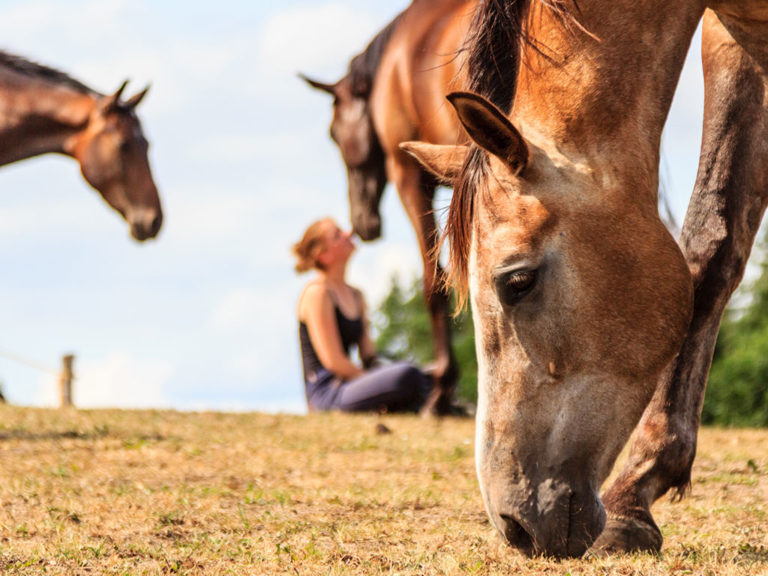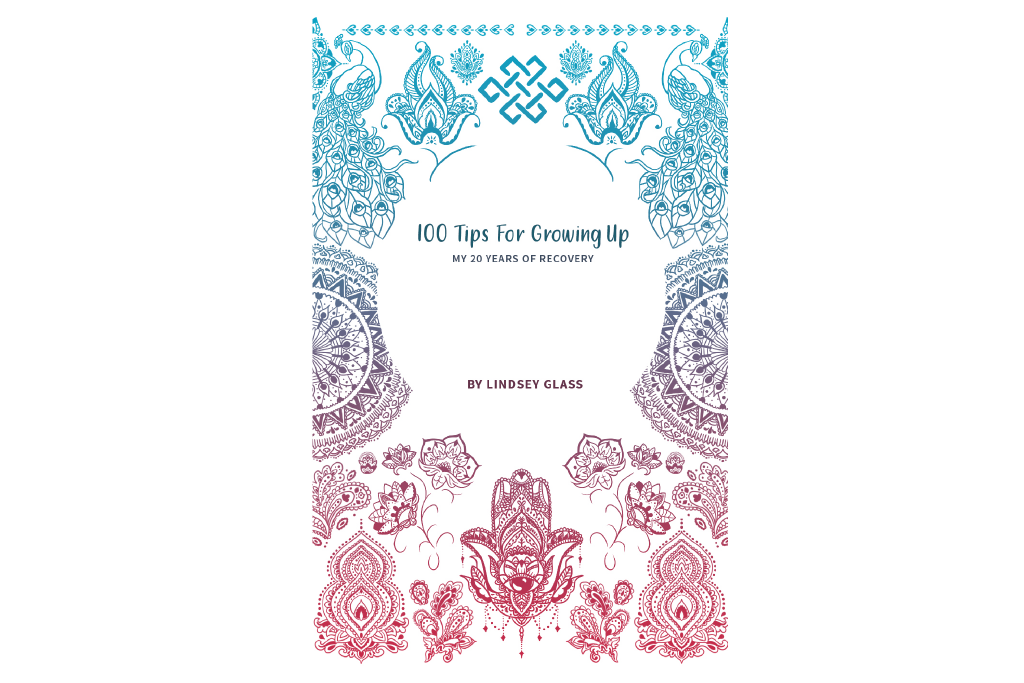

Honesty in recovery is the magic that drives the change we need to heal. But how can you get honest after years of denial and a lifestyle of lying about relationships and substance use?
Recovery is a huge, still largely untold, story in America. It’s happening everywhere, but we’re more likely to hear the horror stories of addiction than actually see the rebirth that recovery brings to thousands of people every day. It is something of a mystery why some people (even addicts who have used for decades) flourish in recovery, while others keep returning to destructive old habits no matter how much support and many resources they have. Honesty has a lot to do with whether we recover or relapse.
Recently horse therapy has been taking hold as a powerful tool that helps veterans with injuries and PTSD, children and adults with disabilities, trauma, addiction recovery, and other mental health challenges. It works because horses relate to the essence of humans not to their physical being, the stories they tell themselves, or the past experiences that have shaped them. So learning what horses tell us about ourselves can change us.
I traveled to Equinection, a stunningly beautiful horse farm in North Carolina founded by Karen Head, to learn about horses. It was a while ago now, but I still think of that retreat as a changing moment in my life. Karen Head is a steely horsewoman who looks a lot like a female version of Robert Redford in “The Horse Whisperer,” and she was the leader.
Karen has practiced experiential education for 30 years. Karen has also worked on a ranch, acted and directed in the theatre, performed in a band, and won Emmys for her work in documentaries. Her years of training in Equine Facilitated Learning prompted her to start a business whose mission is “To help people live more fulfilling lives by realizing their intrinsic gifts of strength, wisdom, and peace.” She does this by inspiring the participants in her programs to deepen their self-awareness through interaction with horses. The tagline on Equinection’s website is self-discovery through the peace, power, and wisdom of the horse.
The first thing that Karen teaches her participants is that horses don’t care whether you are a great horse person, an addict, an enabler, or if you are broken in body or spirit. Horses are prey animals, which means they are wary and easily frightened. They each have their own personality (like we do), but they have some fundamental ways of dealing with fear and anxiety. And to work with them in recovery humans need to learn few essential things about the messages they send without being aware of it.
All the participants come to Equinection with a story and a mission. My mission was to see how Equine Assisted Learning works. I also hoped to find the old me, the person lost in my journey of raising a family, becoming an author, running a nonprofit, being an enabler as I tried to deal the baffling impact of addiction. The truth was after all these years, I could no longer tell if I was aggressive and controlling, reasonable or unreasonable, mean or nice. Could a horse tell me? I hoped so. With these goals, I arrived in rolling hills, deep in the North Caroline countryside where cell phones and computers seem unnatural and unneeded. In fact, I forgot about mine right away.
Karen’s first instruction was: Don’t touch or talk to the horses, or even think about giving them treats. I could stand in the pasture, and be still. How often do we start relationships just being there? As far as I was concerned, nothing was going on. I wasn’t allowed to do anything. But the horses were acutely aware of me, and could possibly even have been discussing me amongst themselves. I certainly heard them sending their own messages from pasture to pasture. Some came over to size me up, and a few actively asked for direct interaction: Those horses wanted to be touched.
Did you know that horses have a huge magnetic field, and you have one, too? Some call it an aura, or a vibe. Whatever you call it, in reality it’s what draws people (animals, and a variety of good things) to you, or pushes the things you want away. Humans interact with each other based on the vibes they give out and receive. We do have names for the laws of attraction. Unfortunately, we don’t always have excellent feedback on the messages we’re sending, how those messages are received by others, and how our messages might be interfering with our progress toward better relationships and a better life.
Are you edgy, nervous, fearful? Horses can tell from across the pasture. Are you arrogant, pushy, aggressive? Do people notice that about you and back away? A horse will push right back. Are you kind, sensitive, open to caring about the feelings of others? A horse will respond to that, too.
Here’s the thing about humans. We define ourselves by our stories. Whether we’ve built a good strong story about ourselves as people of power and significance, victims of others and circumstances, successes or failures, they’re just stories. Our stories are the armor we put on every day to face the world. But the stories we tell don’t project the truth of how we really feel inside. Horses run away when they’re scared. They roll and yawn to release tension. They all have histories, but treated with love and respect, horses can let go. Humans hang onto their stories of woe and success long after they are needed to define and protect us.
Here’s an example. I might say I’m not afraid of anything. I’m cool. But the horse in front of me acts out what I’m really projecting. I’m scared of being hurt. I don’t know what I’m doing in life. I’d really prefer to run away and hide. If people are defensive and fearful, the horses balk and won’t do what is asked of them. Simple things like walking in a circle, or trotting beside us, or being led by us. If they’re not on a lead, they will walk away. If people are pushy or not paying attention, the horses stop dead. Or worse, they might mirror behavior they see in us. If you come at a horse, a horse will come at you. And you don’t want a 2000-pound animal coming at you.
Horses teach you when to back off. Resistance from a horse in the way of a little nip can be a powerful teaching tool for how to interact with all beings. Just like kids in a gang, if you’re afraid it’s best not to move forward but rather to back up. Hold up. Think things over. Try a different, gentler approach. If you pay attention to how a horse is relating to you, you can learn a lot.
When I sat blindfolded while four horses were brought into the ring, I didn’t know what the exercise was for. But I could tell the horses apart. I could feel them, and I could actually “see” several of them. The purpose was to choose a horse to work with. I had no idea why any horse wouldn’t do. But I took the exercise seriously.
I didn’t choose the biggest and most powerful horse in the herd, although I knew which one it was. And I didn’t choose the horse that had tried so hard to get my attention in the pasture, even though he was spirited and seemed to like me. I choose the smallest and plainest horse in the herd. The horse that made me feel calm and safe. In fact, I chose the horse with a history like mine. Molly was the horse version of me. And I wasn’t the only one to choose the horse that mirrored my own personality.
That first day I had walked to Molly’s pasture and stood beside her, not telling her how much I love horses, not bribing her with apples or hugs, not sharing any of my secrets. Molly and I just stood there with an electric fence between us. And something happened in the magnetic field I didn’t even know existed.
Four days later, Molly followed me in the ring without the encouragement of a whip or a lead. She walked away from me when I said things I thought were true about me, but she didn’t believe. She came to me and stood beside when I said things she did believe. Karen Head, of course, was the onion peeler, the qualified guide who knows truth from fiction both in humans and horses. But when I buried my facade in the ring, Molly put her big head on my heart, and it was clear that something magical had happened. And when their turn came, the other participants felt the same.
I left Molly without thanking her for her generosity in taking my pain. She got no carrots or apples or any of the hugs I wanted to give her. I brushed her for a few seconds. But she has some old injuries from humans and doesn’t love the brush. Maybe the next time.
There is no single approved form of Equine Assisted Learning. In some programs participants ride with therapists and horse trainers in the ring. Some programs, like Equinection, are about direct interaction with horses and participants on the ground and a facilitator like Karen in the ring with them.
To actually be in recovery people have to change a lot of things about themselves. Giving up the drug(s) of choice is only the first step. What happens after that to build new lives, depends on individuals’ ability to divert their emotions and energies to new thoughts and activities that put them on a more positive path.
Luckily, there are many programs that help. 12-step programs like AA and Al-anon seem to work the best for the most. But often people need a few other tools in addition to 12-step programs to keep the recovery button firmly in the on position and the positive internal change going. Yoga, meditation, exercise and sports, as well as good nutrition, new hobbies and group activities are all tools that aid recovery.











Copyright © 2023 Reach Out Recovery Services LLC | Terms and Conitions |. Site by Quadshot Digital